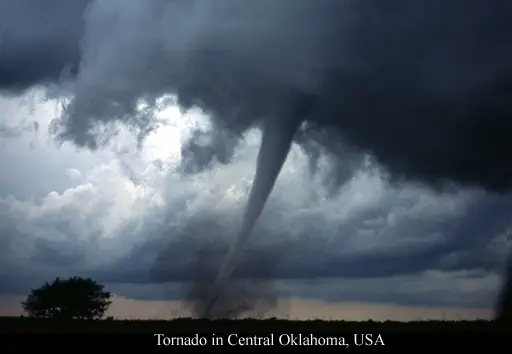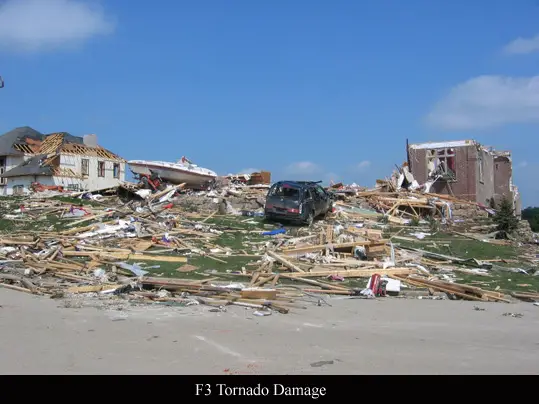The latest Extreme Storms from around the World
A tornado is defined by the Glossary of Meteorology as “a violently rotating column of air, in contact with the ground, either pendant from a cumuliform cloud or underneath a cumuliform cloud, and often (but not always) visible as a funnel cloud..”
Click here to share your own twister story with visitors to this page!
The United States has the most activity of any country, seeing about four times the frequency estimated in all of Europe. This is mostly due to the unique geography of the continent. North America is a relatively large continent that extends from the tropical south into arctic areas, and has no major east-west mountain range to block air flow between these two areas. This unique topography allows for many collisons of warm and cold air; creating the conditions necessary to breed strong, long-lived storms which occur many times a year. A large portion of these events form in an area of the central United States known as Tornado Alley.

Tornadoes are one of nature’s most violent storms. In an average year, about 1,000 events are reported across the United States, resulting in 80 deaths and more than 1,500 injuries. These storms result from a violently rotating column of air extending from a thunderstorm to the ground. The most violent are capable of tremendous destruction with wind speeds of 400 kilometres per hour (250 mph) or more. Damage paths can be in excess of one 1.6 kilometres wide (1 mile)and 80 kilometres (50 miles) long.
Tornadoes come in all shapes and sizes and can occur anywhere in the U.S. at any time of the year. In the southern states, peak season is March through May, while peak months in the northern states are during the summer.
Intensity and Damage
These twisting storms vary in intensity regardless of shape, size, and location, though strong twisters are typically larger than weak ones.
In the United States, F0 and F1 (T0 through T3) twisting storms account for 80% of all events. The rate of occurrence drops off quickly with increasing strength—violent (stronger than F4, T8), account for less than 1% of all reports. Outside of the United States and areas in south-central Asia, significant and violent twisters are extremely rare.
Below you can see an example of F3 damage. Here, the roof and some inner walls of this brick building have been demolished. The Fujita scale rates these storms by the amount of damage caused. An F0 will likely damage trees but not structures, whereas an F5 can rip buildings off their foundations and even tear asphalt from the ground. The similar TORRO scale ranges from a T0 for extremely weak twisters to T11 for the most powerful known storms.

Click on the video to see how ferocious a twister really can be!

